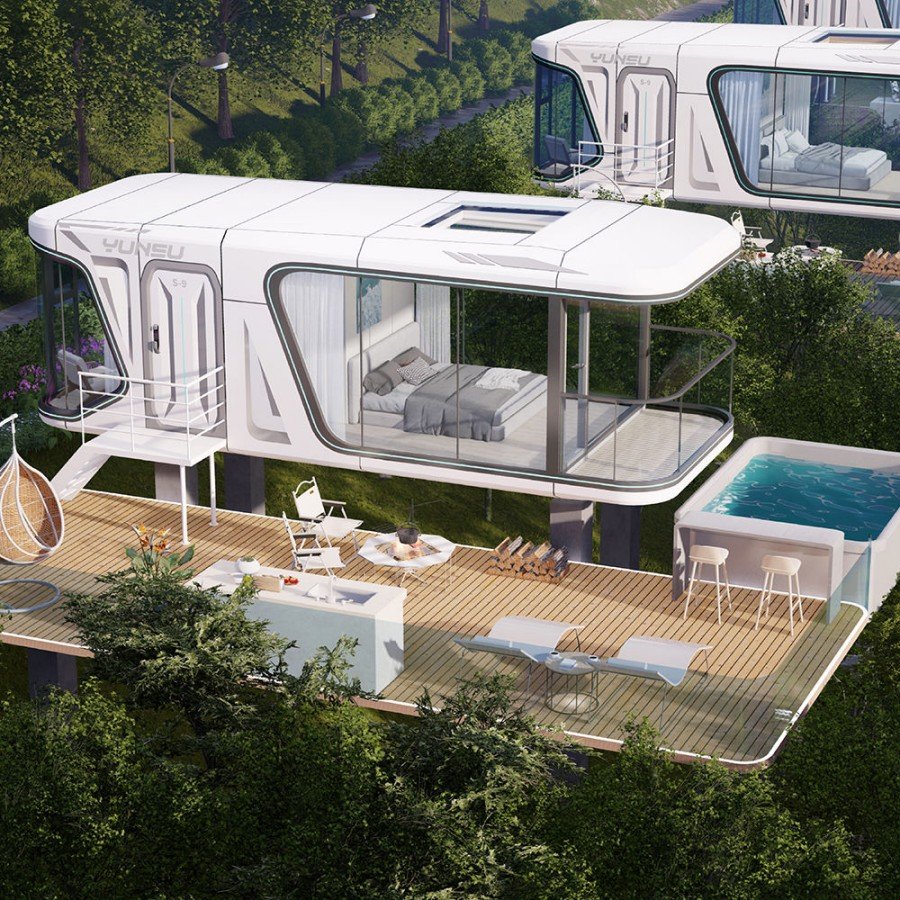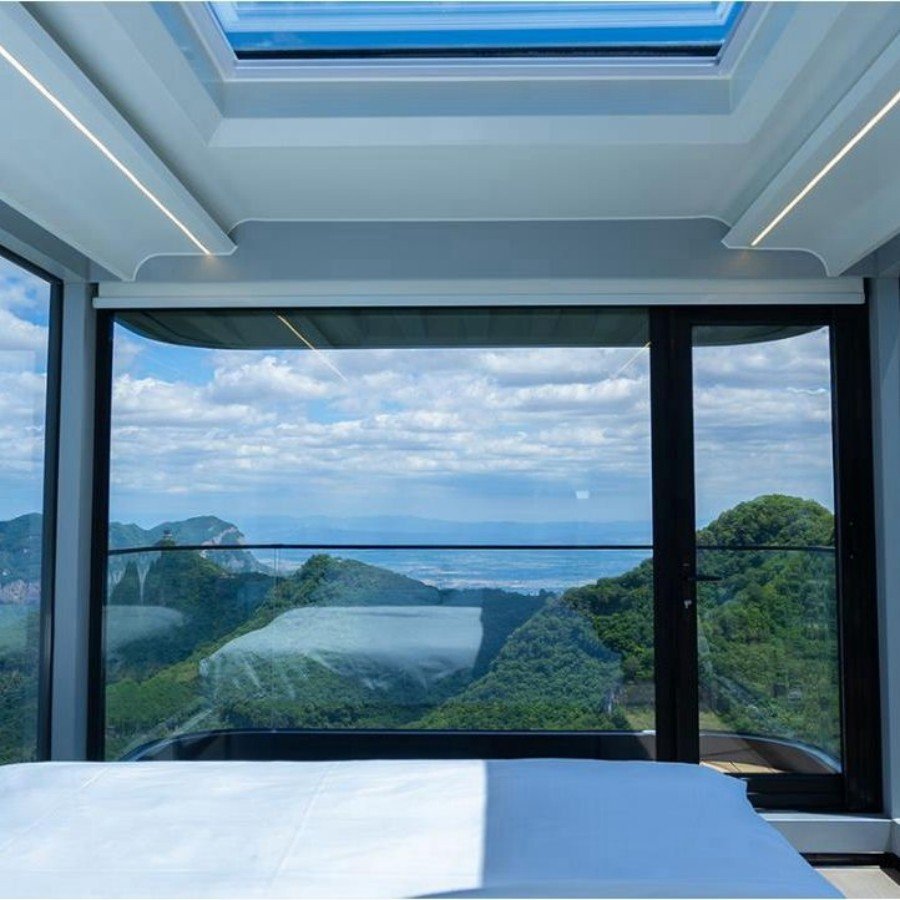Capsule houses have captured the imagination of modern home‑seekers with their sleek, space‑saving designs and promise of sustainability. As more people consider these compact dwellings, a critical question emerges: can they really serve as safe, long‑term residences?
In short, yes—capsule homes are engineered for durability and safety over decades. Their carefully calculated structural frames, high‑grade materials, and smart layout features work together to withstand daily wear, extreme weather, and even seismic activity.
Keep reading to discover how capsule houses hold up—from their steel and aluminum skeletons to ventilation systems, mental‑health–friendly layouts, and maintenance requirements—and learn what it takes to make one of these futuristic homes last.
1)Capsule House Structural Design & Material Durability
The structure of capsule houses is designed with you in mind, ensuring safety and functionality through precise dimensions. For instance, the frames are carefully crafted in geometric or curved shapes to evenly distribute loads and reduce structural stress. As a result, your house remains stable, even under heavy weight or harsh weather conditions.
Moreover, aerodynamic designs help protect you by minimizing wind resistance, allowing strong winds to flow around the house without causing damage. In addition, sealed joints provide watertight and airtight protection, keeping you safe from water leaks, drafts, and wear caused by the weather. Thanks to these features, your home stays durable and secure for both short-term and long-term use.
Inside, the compact layout is thoughtfully planned to make the most of your space. For example, furniture, storage, and fixtures are positioned to maintain balance and prevent overcrowding. This way, you can move around safely without worrying about tripping or instability. Overall, these smart design elements work together to create a safe and comfortable living environment for you.

→ Materials used for manufacturing
Structural Frame: Capsule houses typically use steel or aluminum for the frame. Steel offers strong support, making it resistant to heavy loads and extreme weather, ensuring stability. Aluminum is lightweight and corrosion-resistant, ideal for coastal or humid environments where rust could compromise safety.
Walls and Roofs: Walls and roofs are often made from sandwich panels, combining durable materials with insulation. This design provides impact resistance and thermal protection. Fiberglass, used in some panels, resists water and cracking, contributing to long-term safety and stability.
Windows and Doors: Safety glass, such as tempered or laminated glass, is used for windows and doors, preventing shattering and reducing injury risks. Polycarbonate panels offer impact resistance, and secure locks protect against unauthorized entry, enhancing overall safety.
Insulation: Insulation materials like polyurethane foam or recycled fibers help regulate temperatures while adding fire resistance. These materials also contribute to long-term safety by being durable and non-toxic.
Flooring: Non-slip materials like vinyl or laminate are commonly used for flooring to prevent slips and falls, especially in wet areas. These materials are durable, reducing the need for frequent replacements.
Sealing and Weatherproofing: Advanced sealing materials like silicone ensure airtight, watertight joints, protecting the house from leaks and drafts. Weatherproof coatings also resist moisture, UV damage, and corrosion, ensuring the structure remains safe and durable.

2) Can capsule house handle Extreme weather?
Yes, your capsule house is designed to handle extreme weather conditions. The structural frame, typically made from steel (with a yield strength of 250-350 MPa) or aluminum (tensile strength of around 150-250 MPa), provides the strength and stability needed to withstand heavy winds, snow, and seismic activity. Steel is especially resilient to strong forces, while aluminum’s corrosion resistance makes it perfect for coastal or humid environments.
Moreover, the aerodynamic design of your capsule house can reduce wind resistance by up to 30%, allowing high winds (up to 150 mph in some cases) to flow smoothly around the structure without causing damage. In addition, weatherproofing features like sealed joints and insulated panels protect against water infiltration and temperature extremes. These insulation materials offer an R-value of 12-15 for thermal resistance, helping to maintain comfort.
With proper maintenance, your capsule house will be able to withstand extreme weather events like hurricanes, snowstorms, and earthquakes, ensuring long-term safety and stability.
3)Can Capsule Houses Withstand Earthquakes
Your capsule house is built to keep you safe during earthquakes, thanks to its structure, materials, design, and foundation. The frame, made from strong yet flexible materials, helps absorb and distribute seismic forces, reducing stress on the house. Moreover, the lightweight design minimizes the impact of tremors, making your home more resilient during shaking.
The compact layout ensures that the load is evenly distributed, which helps maintain stability and balance during an earthquake. Additionally, the foundation, often anchored to reinforced concrete slabs or adjustable footings, prevents your house from shifting or settling.
With durable materials like steel and aluminum, your capsule house gains strength and flexibility, allowing it to withstand earthquake forces. These combined features make your capsule house a safe and reliable option for areas prone to seismic activity.

4) Does Living in a Capsule House Affect Your Mental Health
Compared to the small, cramped apartments in big cities, a capsule house can actually be much better for your mental health. Many city apartments are tiny, often with no windows or privacy, which can leave you feeling stuck and stressed. In fact, studies show that living in small, dark spaces can increase anxiety and depression.
On the other hand, your capsule house is designed to be cozy and efficient. With smart furniture and storage solutions, you’ll feel more organized and less cluttered. The compact space is well-planned, often including natural light and good ventilation, which can improve your mood and overall well-being. Plus, by using space more effectively, capsule houses help reduce stress and make you feel more at ease.
In short, compared to the “coffin-like” apartments in cities, your capsule house can offer you a brighter, more comfortable, and mentally healthier place to live.
5) How Is Airflow and Ventilation Managed in Capsule Houses
In a well-designed capsule house, airflow is carefully considered to prevent suffocation and maintain a healthy living environment. These houses often come with built-in ventilation systems that promote good air circulation, preventing stale air from building up. Windows, vents, and even adjustable skylights help ensure fresh air flows in, and moisture and odors are kept out.
With proper airflow, you can avoid issues like suffocation or discomfort that might occur in poorly ventilated spaces. In fact, having good ventilation helps regulate temperature and humidity, which also improves your overall comfort and reduces the risk of mold or mildew.
So, compared to small, poorly ventilated apartments in big cities, your capsule house is designed to offer better airflow, ensuring you feel fresh, comfortable, and safe in your space.

6) What Maintenance Do Capsule Houses Require and How Long Can They Last
Capsule house is relatively low-maintenance thanks to its durable materials and efficient design. In addition, the use of steel, aluminum, and weather-resistant panels ensures the structure resists corrosion, wear, and weather damage, meaning you won’t need frequent repairs. Furthermore, regular maintenance, such as cleaning vents, checking seals, and inspecting the foundation, is easy and minimal.
With proper care, your capsule house can last for decades. For example, steel frames can last 50+ years, while aluminum is ideal for coastal areas due to its resistance to corrosion. Overall, with good upkeep, your capsule house will provide a long-lasting, stable living space.
Conclusion
In conclusion, capsule houses are a safe, sustainable, and efficient choice for both short-term and long-term living. With their durable materials, innovative designs, and ability to withstand extreme weather conditions, they offer a reliable solution for modern living. Regular maintenance ensures their longevity, while their compact layouts and strong structures provide stability and comfort. If you’re ready to embrace the future of housing, Glam House offers top-quality capsule homes designed to meet all your needs. Explore their collection today and find the perfect capsule house for your lifestyle


